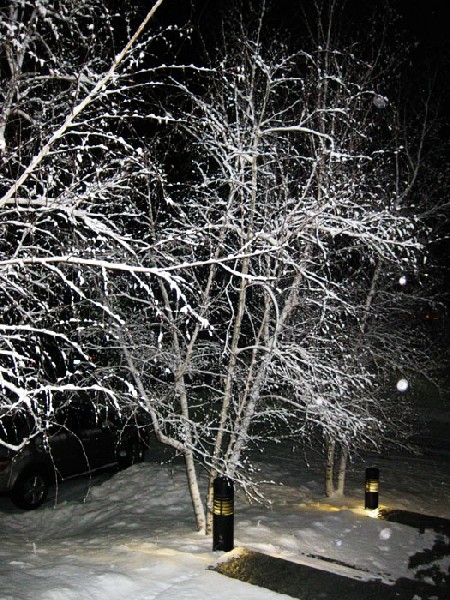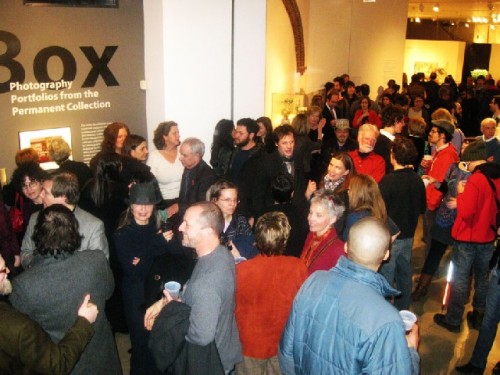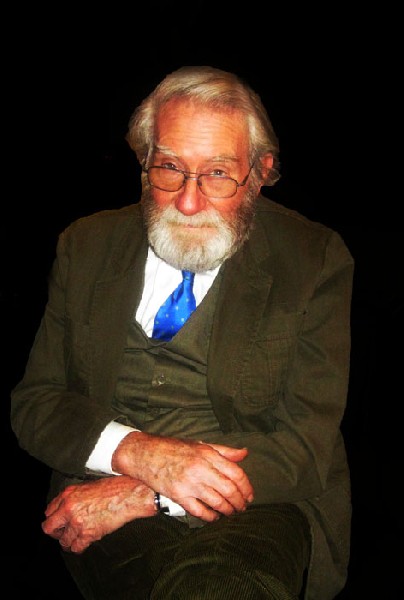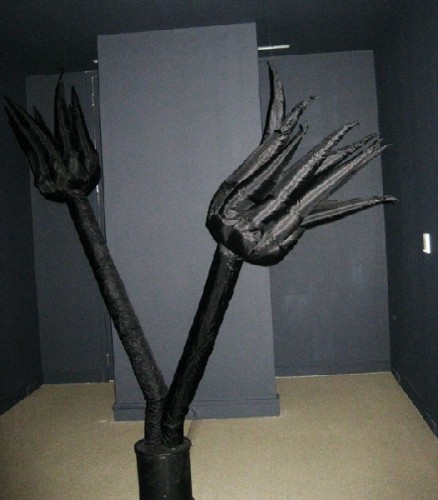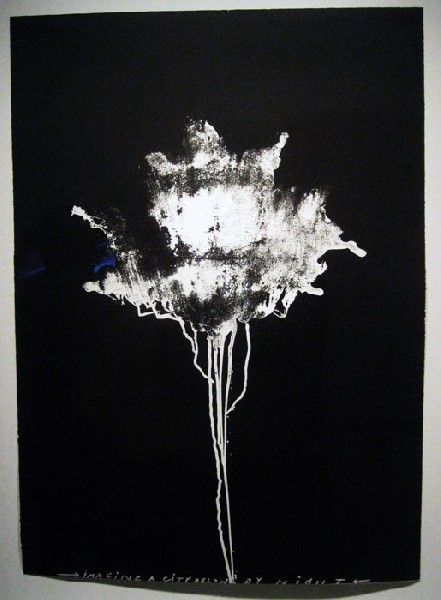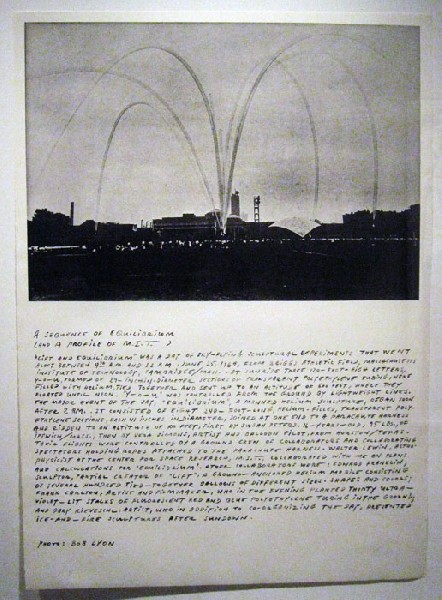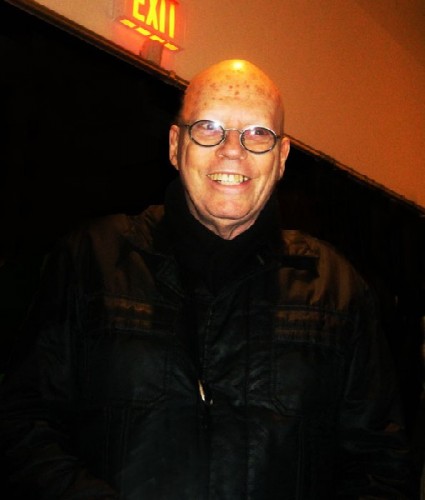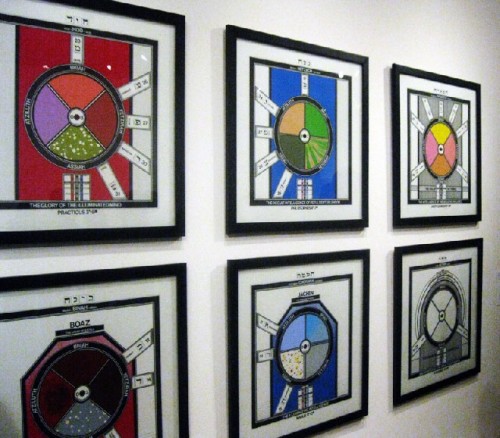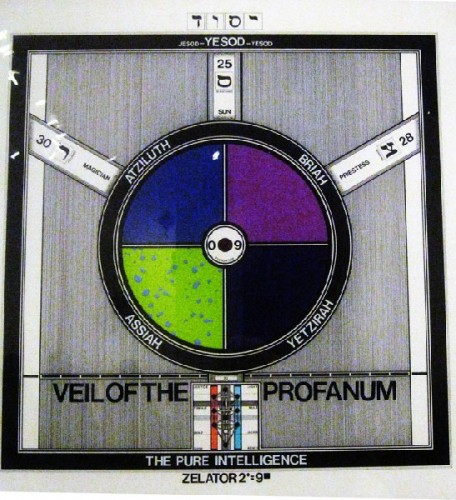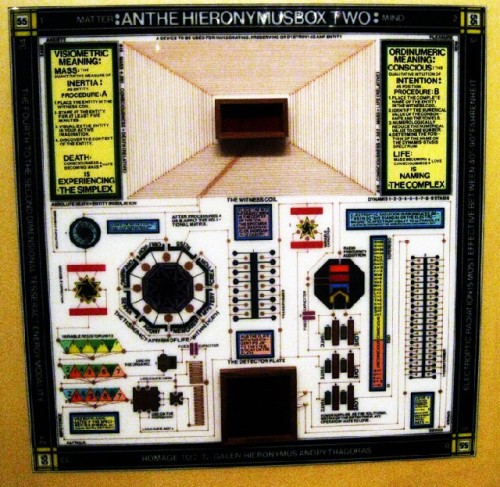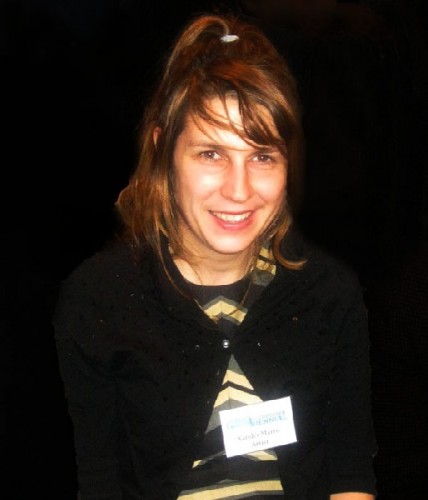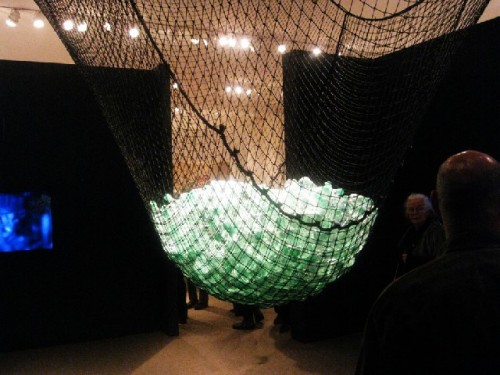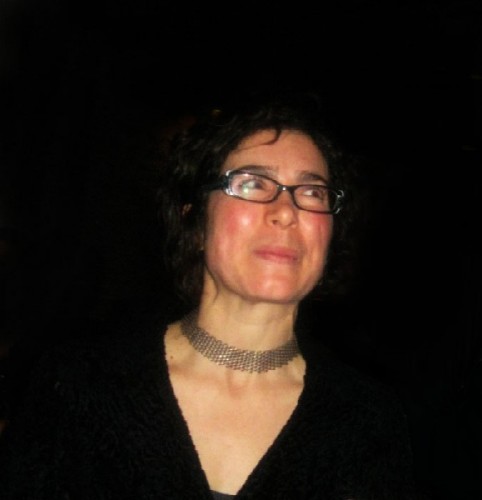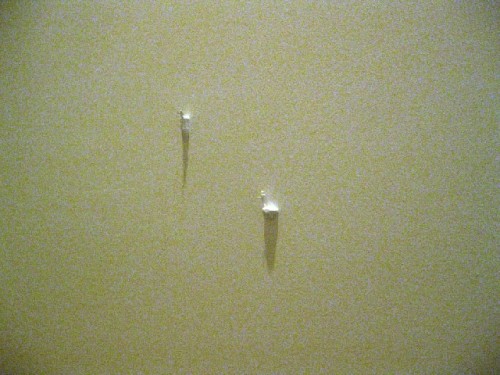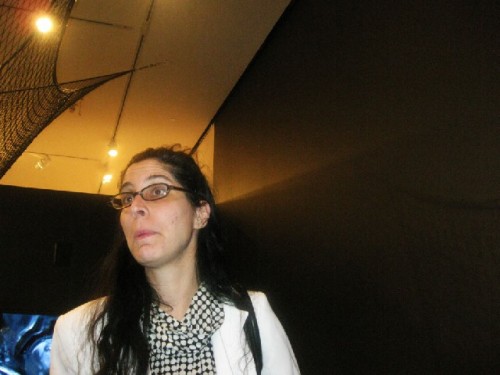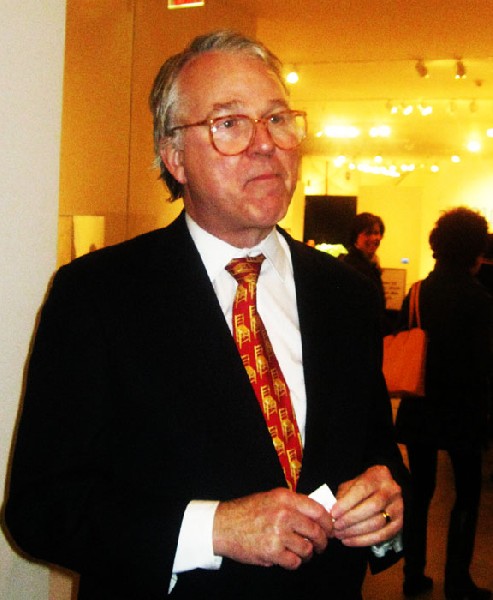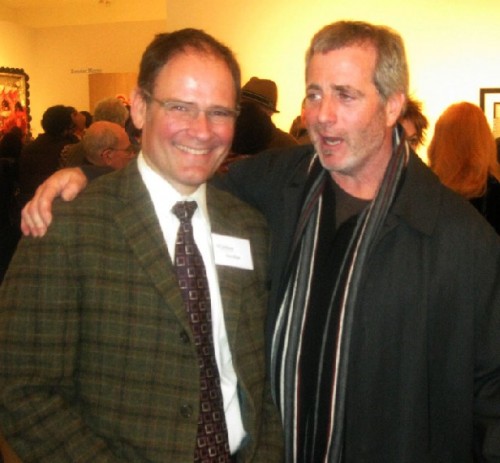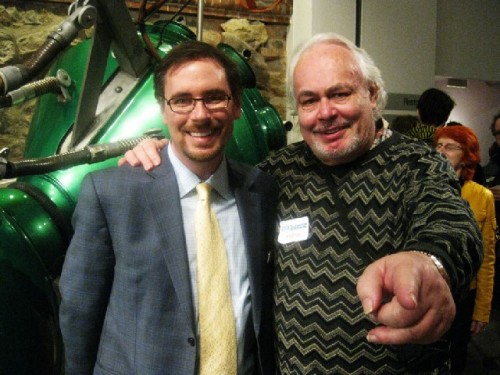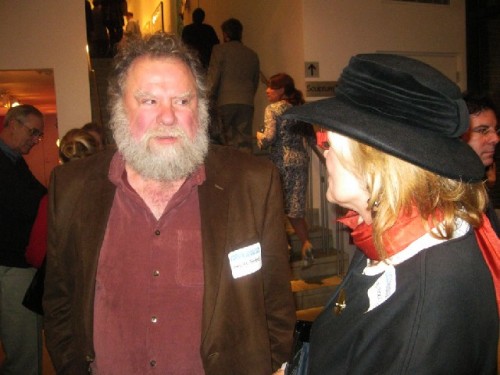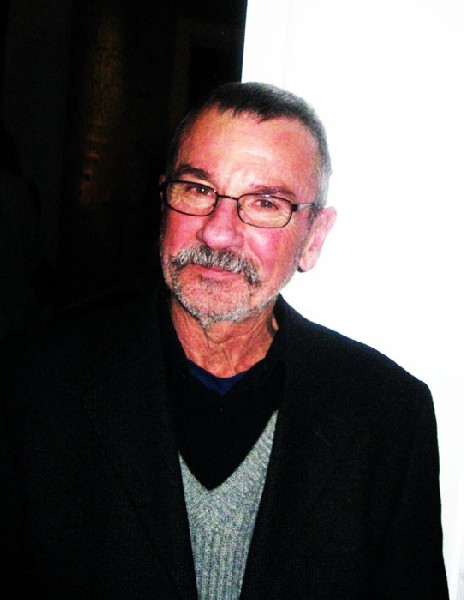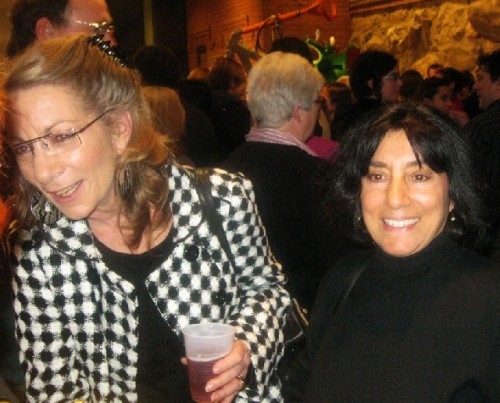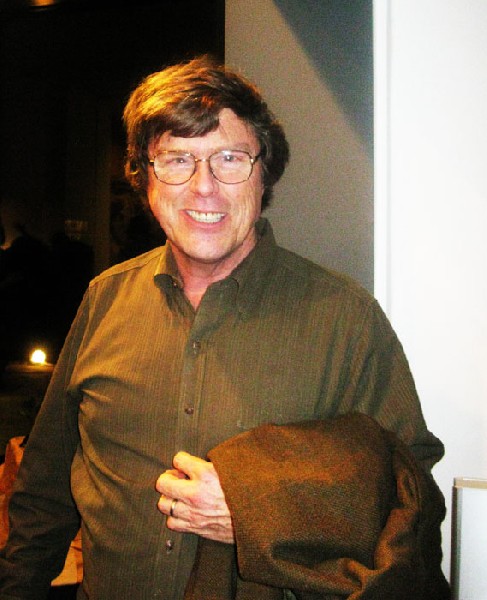The 2010 DeCordova Biennial
A Visual Buffet of New England Artists
By: Charles Giuliano - Jan 31, 2010
The 2010 DeCordova Biennial
DeCordova Sculpture Park and Museum
Lincoln, Mass.
January 23 through April 11
Organized by Dina Deitsch
Catalogue: 90 Pages, Design by Julie Cho; texts by Julie Barry, Nina Bozinik, Dina Deitsch, and Emily Isenberg, Forward by DeCordova Director, Dennis Kois
Advisory Board: Mark Bessire, Director, Portland Museum of Art, George Fifield, Director, Boston CyberArts Festival, Jennifer Gross, Curator of Modern and Contemporary Art, Yale University Art Gallery
Artists: Greta Bank, Ross Cisneros, Georgie Friedman, Paul Laffoley, Philip Lique, Xander Marro, Christoher Mir, Liz Nofzinger, Oscar Palacio, Otto Piene, William Pope.L, Randy Regier, Ward Shelley, Laurel Sparks, Mark Tribe, August Ventimuglia, and Karin Weiner.
The 2010 DeCorodova Biennial, in posh, bucolic Lincoln, Mass. includes 17 artists from the six New England States. It pursues the mandate of the museum to promote the modern and contemporary work of the region.
By definition the DeCordova is a regional museum. Another term for regional, with a less flattering connotation, might be provincial. The difference has to do with more than geography. Regional implies mapping out and confining a territory. It states that the museum is the center of a kind of compass that circumscribes a circle drawn around it. This creates borders and its interests do not cross boundaries. It evokes a state of mind. The institution thinks long and hard of the art and creativity of its turf. This also entails not crossing the line of issues and ideas that are global in scope. A failure to consider what lies beyond an arbitrary horizon defines the essence of provincial. It is the opposite of cosmopolitan.
This is no moot point as it cuts to the very heart and soul of the DeCordova as an institution. It implies its limits and value to the larger art world. Is it to be grouped with any number of regional arts organizations with their localized agendas? Or, is its good work to be expanded to a check list of significant contemporary arts organizations. How, for example, does its programming compare to such neighbors as the cozy, homey Danforth Museum, in Framingham, just down the pike, or to Boston's Institute of Contemporary Art, which is viewed as a cutting edge, world class museum. Compare and contrast the DeCordova to other regional museums from the Provincetown Art Assocation and Museum to the Aldrich Museum in Connecticut.
The DeCordova truly cares for and nurtures the artists which fall within its fictive cast shadow. To some extent this is also true for the ICA which presents artists in the region as a sidebar to its international programming. Mass MoCA in North Adams, which was created through the funding of the Commonwealth's tax payers, doesn't give a fig about local or regional artists. Although Massachusetts artists may through serendipity be included in its exhibitions and programming.
The Museum of Fine Arts Boston cares only for the artists of its Brahmin past, no Jewish Boston Expressionists need apply. It takes token notice of women through its sporadic Maud Morgan Prize.
During the 22 year tenure of former director, Paul Master Karnik, the DeCordova was mostly, well, provincial. The curatorial team of Rachel Rosenfield Lafo and Nick Capasso never wandered far beyond the six New England States. One would occasionally stumble upon then at the Whitney or rambling about Chelsea. But there was no mandate for them to visit the Venice Biennale, documenta, or even Tate Modern. If they undertook that travel it was on their own time and dime.
By confining themselves to New England studio visits, at that rather arbitrarily, there were serious blinders to their curatorial vision. It seemed that in that score and more of years the DeCordova rarely did anything of special interest and impact. An exception might be the retrospective of the late pioneering holographer, Harriet Casdin Silver.
The DeCordova undertook ambitious but flawed historical surveys. As previously noted its overview Expressionism in Boston, 1945-58 (1985) was a disaster. There was solid research in the exhibitions and catalogues for Painting in Boston: 1950-2000 and a year later Photography in Boston: 1955-1985. The third in the series Sculpture in Boston while planned was never executed.
At the time the selections and omissions of those historical shows were frustrating. Peripheral artists were featured and major ones were excluded. In the painting show the African American protest artist, Dana Chandler, Jr., whose influence was more political than aesthetic, was featured. The leftist painter, Arnold Trachtman, a better and more significant artist was mentioned (page 155 in a list of a dozen artists) in the catalogue but excluded from the exhibition. Similarly, visionary artist, Alex Grey, who showed at the seminal Stux Gallery and moved years ago to New York was included. Paul Laffoley, a visionary artist with a global reputation who still lives in Boston, was ignored. He didn't rate a single mention in a catalogue of some 264 pages.
The exhibition Photography in Boston: 1955-1985, and its catalogue edited by Rachel Rosenfield Lafo and Gilian Nagler, was also notable for errors of judgment. The exhibition included images by Nan Goldin but not those of fellow Museum School students, Mark Morissroe, Jack Pierson (mentioned on page 129), or the Starn Twins.
In a seminal ICA exhibition The Boston School (1996) the curator Lia Gangitano stated that Goldin and others in the group considered Morrisroe (1959-1989), who died of AIDS, to have been their greatest inspiration and influence. The Starns created major portraits of Morissroe. When, at the time, I asked Rachel why she did not include Morrisroe, noting his reputation among international curators and collectors, she told me "I don't think that he was important." Duh.
Of course, hindsight is 20/20. One may always look back at exhibition catalogues and Biennials in particular musing about artists now long forgotten as well as those whose reputations have grown over time.
Returning to that notion of geography and the mandate of the DeCordova to cover the art of New England one might argue that what is created in this region is indeed of global significance. The DeCordova has every right, mandate and opportunity to configure itself as a world class institution. Just consider for a moment what falls within its shadow.
For openers, the artists of New England do not reside in log cabins in the woods. Though some do. They get out and about. Many visit and even participate in the ever expanding network of international exhibitions and biennials. Many artists who live and work in New England have passports issued by other nations. They have come to teach at the many schools and colleges that are unique to New England. Renowned artists may be found in Providence at the Rhode Island School of Design, in Portland at the Maine College of Art, in New Haven at Yale or in Boston at MIT, Harvard, Mass Art, Suffolk University, the Art Institute of Boston, or nearby at the Montserrat College of Art. They are scattered in the Berkshires clustered around Mass MoCA or feather off into Vermont and New Hampshire. Provincetown and the Lower Cape are home to one of America's oldest and most significant artist colonies.
If you consider the critical mass of what is created in New England it may be viewed as one of the major centers for contemporary art in the world. Of course we are within commuting distance of New York City. That proximity has always informed, defined and challenged us. It's the Red Sox vs. Yankees thing. Now and then our teams bring back the gold. That's just as true for our museums, artists and galleries.
Given the regime change we regarded this DeCordova Biennial as redolent of special interest and significance. Following that 22 year long aesthetic slumber there are glimmers of change. Perusing the list of artists included in the project we were stunned and thrilled to find that it includes Otto Piene and Paul Laffoley. With one move the museum has righted the injustice of decades of neglect. This makes one hope that the museum will take the next steps.
A full blown treatment of Otto Piene and the Center for Advanced Visual Studies at MIT would seem to be a no brainer. Curiously, other than the occasional individual artist, the ICA has ignored CAVS. It has been one of the most important and influential forces in the field that combines art, science and technology. Piene was a founding member of the European Group Zero movement. The Sperone Westwater Zero show, which Astrid and I both reported on, was cited as one of the most important New York exhibitions of the season.
Similarly, it was gratifying to have the DeCordova correct the error of not including Paul Laffoley in the exhibition Painting in Boston: 1950-2000. Again, Laffloey, who is regarded as one of the foremost visionary artists in the world, deserves a DeCordova retrospective. Since Stux Gallery relocated years ago Paul has not had a Boston gallery. He is represented by Kent Gallery in New York. Last year the gallery mounted an interesting view of his work from the 1960s. I recall those works vividly from when they were displayed at Don Law's rock club The Boston Tea Party.
Several years ago, when I curated a show of Paul's work at New England School of Art & Design, I was stunned when he told me it was his first Boston exhibition in some 20 years. We didn't get a single review but the show was given an award by the Boston chapter of the art critic's organization AICA. A year later in the Boston Globe there was a feature by Ken Johnson discussing Laffoley as one of the major Boston artists of his generation.
During the NESAD show, with Joanna Soltan, we sponsored an artist's talk at the Museum School. Artists, collectors, and fans came in from all over the country to hear him speak. Several students took the bus from Portland to attend the lecture. Like Buckminster Fuller, Paul could have talked for days but we shut it down after a couple of hours. I 'm not sure that he got through all of his slides. Truly, Laffoley is a national treasure.
One approaches any biennial with trepidation. You are placing faith in the vision of a curator. As Sartre said "Hell is other people." It was daunting to face gorgeous but often treacherous Route Two, from North Adams to Lincoln, in the dead of winter. We kept a keen eye on the weather before making a last minute commitment. There was the incentive to see Otto and Paul. For ten years my wife, Astrid Hiemer, was Administrative Officer under Piene at CAVS. She worked part time several years ago editing more than 40 essays in English and German for his book. It is finally going to press (700 pages) in Paris. It was great to connect with Otto and his wife the artist Elizabeth Goldring-Piene. Astrid was pleased to encounter the artist designer, Lees Ruoff, who fabricated many of Piene's inflatable sculptures.
Although the DeCordova Biennial entails the usual mumbo jumbo it is a success on many levels. When I expressed the mixed feelings to the director, Dennis Kois, I was surprised that he did not disagree with me. That seems like a really good sign. Not for agreeing with me but for engaging in an open ended dialogue.
Of course, it was brilliant to include the formidable William Pope.L whom we have reported on at length in a sidebar. The performance may have been tedious, what else is new, but it demonstrated vision, clout, and risk taking on the part of the museum..
My former colleague, the curator James Manning reminded me that we had shown several of the artists in the Biennial at NESAD. In addition to Laffoley and Piene Jim included Liz Nofzinger in one of his surveys of emerging artists. He recently remindd me that we had shown Shepherd Fairey in Matt Nash's Money Show. Who knew? Manning has one of the sharpest eyes of his generation for spotting new talent.
We went looking for Nofzinger's work. There seemed to be a lot of buzz about it. Someone asked if I had seen it adding that "She's famous." We found what seemed to be an empty room in a small foyer that leads to the outdoor sculpture deck adjacent to the museum. I asked some artists where her work was located. They said the piece was just her name on the wall. In the Globe review by Sebastian Smee I learned that she had blocked out the windows. I hadn't noticed. In a stairwell someone pointed out that those little bumps on the wall were her relief sculptures. I couldn't really see them. Liz is such a kidder. "Good ship lollipop" springs to mind as a refrain from her earlier video piece.
We stumbled about encountering the work in the exhibition while interacting with friends and colleagues. It is great fun to attend a mobbed opening but clearly not the ideal circumstance to consider the work. Not that most of it demanded that much more of our time and attention. In some ways it is always better to have the work bounce off a throng of people. Strong work has a way of holding up in a crowd.
Days later through images I photographed, a catalogue, and press kit I tried to recover what we had experienced. The catalogue "The Guide to The 2010 DeCordova Biennial" was fairly useless. In a word, the design of the small format booklet by Julie Cho sucked. It was yet another example of cute, artsy design that had nothing to do with documenting the exhibition. Just whose idea was it to include those stupid little tondo renderings/ portraits, in God awful blue duotone, of the artists? The illustrations of the artists' works were, for the most part, caught in the crease of the "clever" guidebook format. Once again it was mostly impossible to match reproductions, essays, and tidbits of info with the work we had viewed.
Perhaps we should have paid more attention to the exhibition. Not that it is really an excuse, but more than half of our time spent at the museum was consumed/ squandered by that Pope.L performance piece.
At best we were left with mixed impressions. The library of the museum was stuffed with stacks of labeled cardboard boxes by Ward Shelley. The labels read "Single Socks and Gloves" or "Pros and Cons." In a corridor were his flow chart diagrams of trends and developments. It had a humorous context that updated Ad Reinhardt.
We walked through Georgie Friedman's fabric cave "Dark Swell" wondering why. Ho hum. What was that hanging net filled with bottles of designer water by Ross Cisneros all about? I could do some research and get back to you on that. There was nothing particularly interesting about the abstract, gestural, funky paintings of Laurel Sparks. So what that Philip Lique suspended an assembled ersatz shark in the center of the gallery. His assemblages scattered about seem so art school. Greta Bank's bubbly sculptures and a zany dysfunctional chair were terrific on every level. We would like to see more of that work. Ditto the space pod and artifacts of Randy Regier.
It would have been great to spend more time with the work but by then they were shutting down and letting the cat out of the cellar. Overall it had been a wonderful evening and we plan to come back. The DeCordova is on track and we look forward to future exhibitions.

